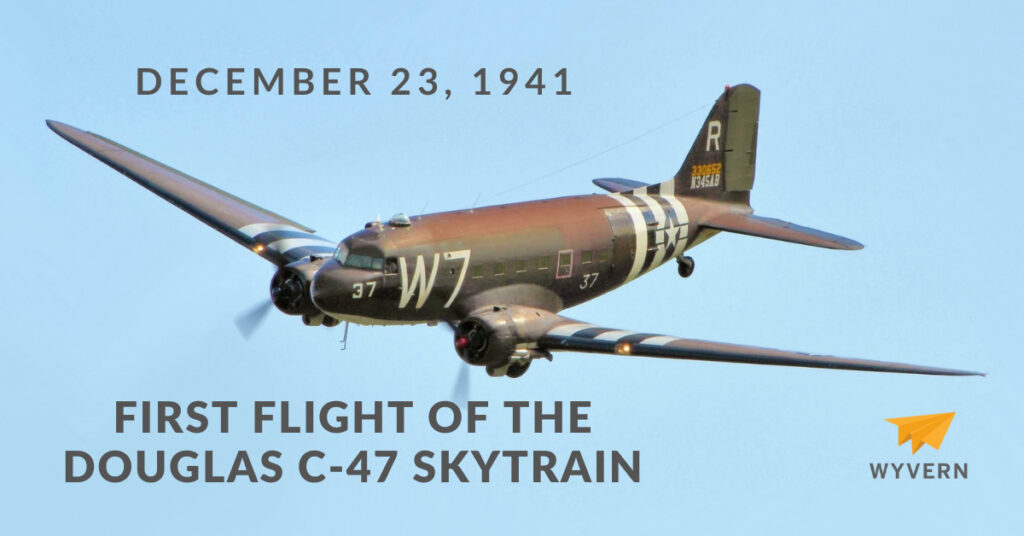C-47, also called Dakota or Skytrain, U.S. military transport aircraft that served in all theatres during World War II and continued in service long afterward. It was used to haul cargo, transport troops, drop paratroops, tow gliders, and as a flying ambulance.
The C-47 was a military adaptation of the Douglas DC-3, a twin-engined low-wing monoplane with retractable landing gear that quickly dominated the infant commercial airline industry from its first appearance in 1935.
With war clouds gathering over Europe, the Army Air Forces ordered military versions of the DC-3 in 1939, and the first of these, the C-53 Skytrooper, entered production in October 1941; some 250 were produced. The definitive military version was the C-47, with a reinforced fuselage, stronger cabin floors for heavy loads, large doors in the rear fuselage for loading cargo and dropping paratroops, and more-powerful engines.
The C-47 entered production in January 1942, and more than 10,000 were manufactured before production ceased in the summer of 1945. Powered by two 1,200-horsepower Pratt & Whitney radial engines, the C-47 had a wingspan of 95 feet (29 metres), a length of 64 feet 5 inches (19.6 metres), and a crew of three (pilot, copilot, and loadmaster or navigator). It had a cruise speed of 155 miles (250 km) per hour and a range of 1,600 miles (2,600 km). The C-47, designated R4D by the U.S. Navy and Dakota by the British Royal Air Force and other English-speaking forces, was produced in many versions. Some were VIP transports, and a few had sleeping accommodations, but the vast majority were fitted with metal bench seats for 28 fully armed troops. The normal payload was 5,000 pounds (2,300 kg), but the C-47 could carry as much as 6,000 pounds (2,700 kg) or even 7,000 pounds (3,200 kg) in an emergency. The spacious rear-fuselage cargo doors could accommodate jeeps, light trucks, or anything else of equivalent bulk and weight, and they could be opened and closed in flight to drop troops or cargo by parachute. This latter capability and its spacious cabin made the C-47 far and away the best paratroop delivery aircraft of the war.
Finally, the C-47 could tow two CG-4 Waco assault gliders or one of the larger British Horsa gliders. As an aerial ambulance, the C-47 could carry 18 stretcher cases and a medical crew of three.
Many hundreds remain in civil service today.
Source: Guilmartin, John F. “C-47”. Encyclopedia Britannica, 23 Nov. 2017, https://www.britannica.com/technology/C-47. Accessed 22 December 2021.


Share this article on social media!
Follow us on social media!